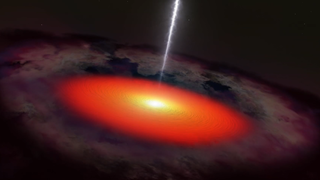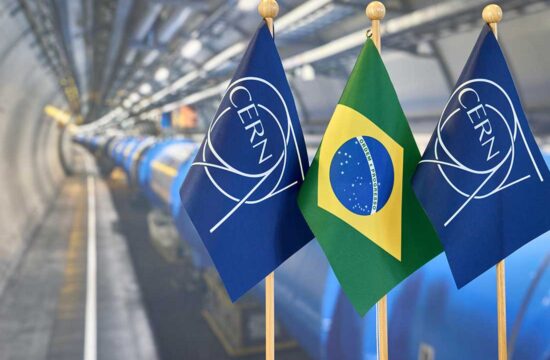For the first time ever, scientists using NASA’s Fermi Gamma-ray Space Telescope have found the source of a high-energy neutrino from outside our galaxy. This neutrino traveled 3.7 billion years at almost the speed of light before being detected on Earth. This is farther than any other neutrino whose origin scientists can identify.
High-energy neutrinos are hard-to-catch particles that scientists think are created by the most powerful events in the cosmos, such as galaxy mergers and material falling onto supermassive black holes. They travel at speeds just shy of the speed of light and rarely interact with other matter, allowing them to travel unimpeded across distances of billions of light-years.
 The discovery of a high-energy neutrino on September 22, 2017, sent astronomers on a chase to locate its source—a supermassiveblack hole in a distant galaxy. Credits: NASA’s Goddard Space Flight Center The discovery of a high-energy neutrino on September 22, 2017, sent astronomers on a chase to locate its source—a supermassiveblack hole in a distant galaxy. Credits: NASA’s Goddard Space Flight Center
Video: NASA’s Fermi Links Cosmic Neutrino to Monster Black Hole
|
The neutrino was discovered by an international team of scientists using the National Science Foundation’s IceCube Neutrino Observatory at the Amundsen–Scott South Pole Station. Fermi found the source of the neutrino by tracing its path back to a blast of gamma-ray light from a distant supermassive black hole in the constellation Orion.
“Again, Fermi has helped make another giant leap in a growing field we call multimessenger astronomy,” said Paul Hertz, director of the Astrophysics Division at NASA Headquarters in Washington. “Neutrinos and gravitational waves deliver new kinds of information about the most extreme environments in the universe. But to best understand what they’re telling us, we need to connect them to the ‘messenger’ astronomers know best—light.”
Scientists study neutrinos, as well as cosmic rays and gamma rays, to understand what is going on in turbulent cosmic environments such as supernovas, black holes and stars. Neutrinos show the complex processes that occur inside the environment, and cosmic rays show the force and speed of violent activity. But, scientists rely on gamma rays, the most energetic form of light, to brightly flag what cosmic source is producing these neutrinos and cosmic rays.
“The most extreme cosmic explosions produce gravitational waves, and the most extreme cosmic accelerators produce high-energy neutrinos and cosmic rays,” says Regina Caputo of NASA’s Goddard Space Flight Center in Greenbelt, Maryland, the analysis coordinator for the Fermi Large Area Telescope Collaboration. “Through Fermi, gamma rays are providing a bridge to each of these new cosmic signals.”
The discovery is the subject of two papers published Thursday in the journal Science. The source identification paper also includes important follow-up observations by the Major Atmospheric Gamma Imaging Cherenkov Telescopes and additional data from NASA’s Neil Gehrels Swift Observatory and many other facilities.







